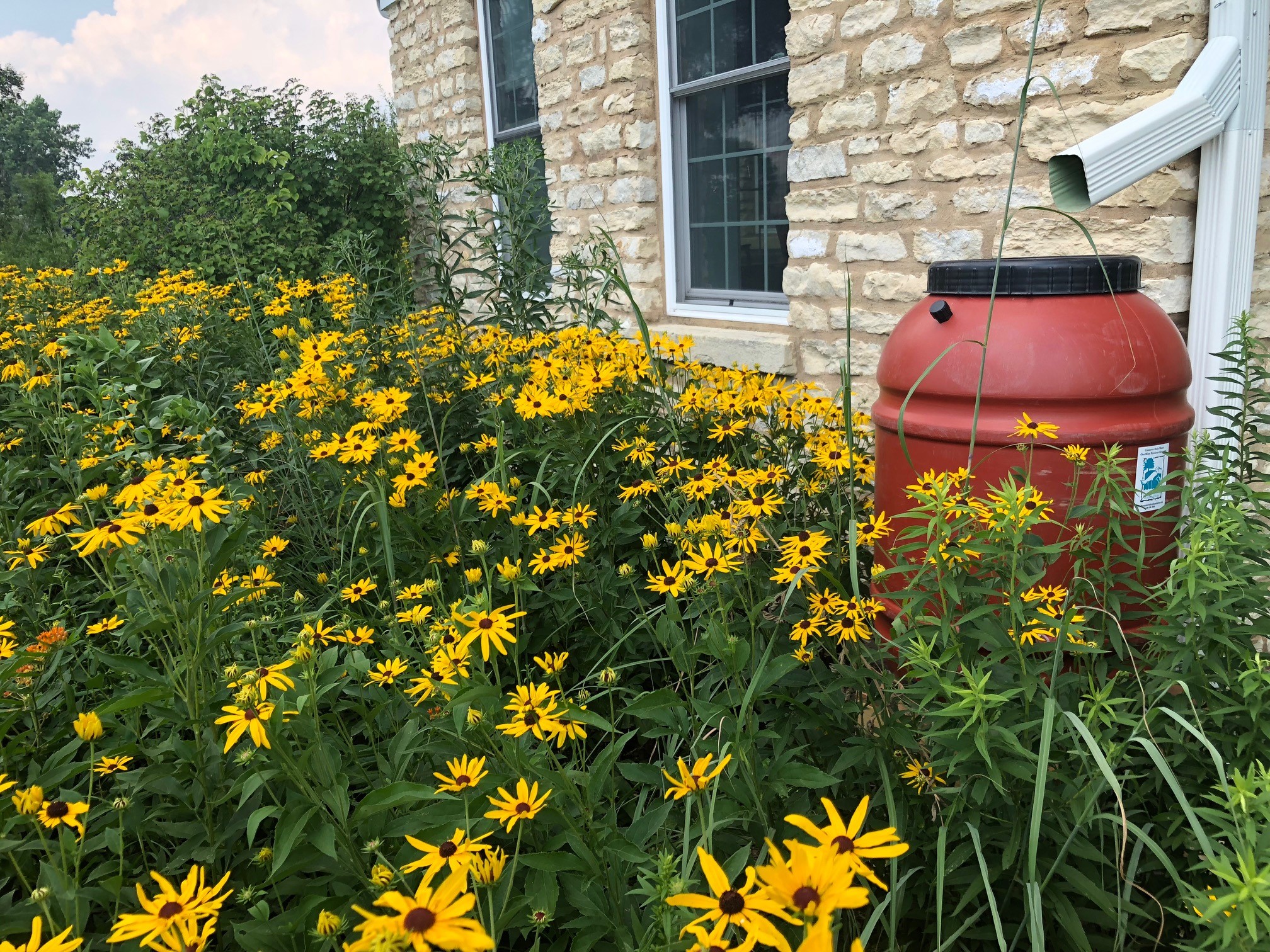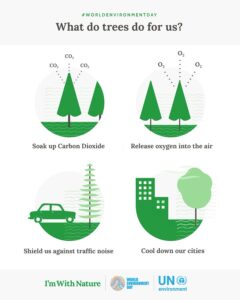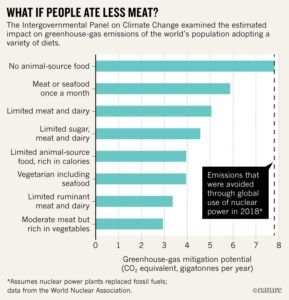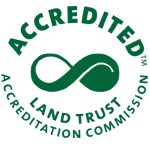The Intergovernmental Panel on Climate Change recently released its latest report, issuing a “code red for humanity” by their own description. For the past 50 years, The Conservation Foundation, through preserving and restoring natural lands, has been helping mitigate the negative impacts of climate change locally.
What about climate adaptation? We are too late to abate all the negative consequences of a warming planet. No matter how fast we turn the wheel, this ship is going to hit a bit of the iceberg ahead. But, the work we do at The Conservation Foundation has the added benefit of making our communities more resilient and able to absorb and adapt to these impacts.
But what can the average person do? Climate change might seem like a problem too large for you as an individual to make any significant difference. But in truth, all of our individual efforts combine to make a HUGE collective difference, and they are a vital piece of a global mitigation strategy. We each must do our part!
This year, as we celebrate our 50th anniversary, we’ll be sharing one tip each week on what we all can do to address the climate crisis, and by the end of the year we’ll have 50+ tips put together that we each can put into practice. Visit this page weekly for a fresh tip to be part of the solution to climate change!
Climate Change Tip #1 – Education: Let’s start with the basics! Do you remember learning about the greenhouse effect in science class? If that was a long time ago, we’ve got you. Here’s a great article to refresh your memory and grasp the fundamentals of why the planet is getting warmer and the impact that has.
Climate Change Tip #2 – Education: We talk a lot about reducing our climate footprint. But how do you know how big your footprint is right now? Get a baseline by taking this quiz. It will show you how many Earths it would require if everyone on Earth lived like you. Spoiler – it probably won’t be good, but don’t be discouraged! We’ve got some solutions, and we’re posting them every week. ?
Climate Change Tip #3 – Food Security: Support your local farmer – the shorter the distance your food has to travel, the less energy consumed before it gets to you. Look no further than our Green Earth Harvest farmshare program for fresh, organic produce right in your neighborhood! A few summer shares are still available, claim yours today!

Climate Change Tip #4 – Carbon Capture: Sure, your lawn is buried under a pile of snow, but that makes it the perfect time to plan! This spring, how do you want to update your landscape to be a part of the local ecosystem? Let’s be intentional and mindful of carbon capture potential of native plants, storm water retention, chemical use, and more. It will reduce your footprint and make our communities more resilient! Seed catalogs are coming out, nurseries are starting to post inventory, and if you need some inspiration on refreshing your garden, look no further! Have questions or ideas you’d like to share? Post them in the comments.
Climate Change Tip #5 – Education: Let’s make sure we’re raising the next generation of environmental stewards and arming them with an understanding of climate change, a love for nature, and a respect for local ecosystems! We love Climate Kids at Nasa for online resources, and offer fabulous kids camps at our farms in Naperville and Montgomery. Registration is now open!
Climate Change Tip #6 – Education: Doesn’t this weather make you want to cozy up with a book? Commit to reading a book this year about the climate crisis. Here’s a list. Do you have recommendations? Post them in the comments!
Climate Change Tip #7 – Emissions Reduction: Rethink, refuse, reduce, reuse, recycle – everything we buy and use comes from the land and ultimately returns back to the land (even if in a different form). We are in the business of protecting land. This includes being aware of making efficient use of the land and the resources that live below and above. The waste we produce – whether put in a landfill, disposed of some other way, or even recycled – all create additional emissions. The best way to truly reduce emissions is to consume less – rethink and refuse.
Climate Change Tip #8 – Emissions Reduction: The trails through our forest preserves make active transportation possible by connecting a network for biking and walking! Reduce your vehicle miles traveled and get your daily exercise by replacing a few car trips with walking or biking. Google Maps will give you great guidance on how to get somewhere walking/rolling, or check out the many trail system maps on Ride Illinois’ website.
Climate Change Tip #9 – Food Security: Try meatless Monday to reduce your carbon footprint. Meat, like beef and lamb, take up a lot of land to graze. That land may be needed for reforestation/carbon sequestration in the future. Then take into account the emissions from the livestock (cow toots!), the fertilizer and food required to feed them, and the transportation costs of getting them from pasture, to processing, to the store, to your table. Simply cutting a bit of red meat from your diet makes a huge difference!
Climate Change Tip #10 – Carbon Capture: Plant a tree! Such a simple thing you’ve probably heard on repeat since you brought a sapling home from school for Arbor Day in third grade.
Climate Change Tip #11 – Emissions Reduction: Methane is four times more potent than carbon dioxide, and one of the largest sources of methane is landfills. We can each do our part to reduce these emissions by keeping organic matter (food and yard waste) out of the landfills. How? Compost! Whether using a backyard composter, a compact kitchen composter, or vermicomposting, there are many ways to tackle this emissions source that can fit in with your lifestyle. Bonus: You get free and natural fertilizer for your plants!
Climate Change Tip #12 – Water Security: Global warming has also been coined “global weirding” and we’re going to continue to see different rain trends in our future. Capturing rain water through a rain barrel will give you a supply of water to use on your landscaping when conditions are dry and will also help alleviate flooding during heavy rains. Rain barrels also alleviate usage of groundwater so we have more clean, safe groundwater for the future.
Climate Change Tip #13 – Carbon Capture: Wetlands capture and store (for a very long time) a tremendous amount of carbon. Not to mention the incredible biodiversity they support and invaluable role they play in improving/protecting water quality. Our region was once rich in wetlands. Now, there are fewer protected wetlands, meaning the wetland areas we do have are even more valuable. Follow The Wetlands Initiative to learn more about this vital local resource!
Climate Change Tip #14 – Water Security: Show your local rivers and streams some love this year! The DuPage River Sweep is on Saturday, May 21st. “The impacts of climate change will hit rivers and river communities first and worst, in the form of increased droughts, floods, and waterborne diseases. Along with decreasing global warming pollution, protecting and restoring rivers must be part of the solution. Healthy rivers boost community safety and security, building resilience against these impacts and helping communities thrive in the face of a changing climate.” –American Rivers
Climate Change Tip #15 – Water Security: You’ve probably heard about or visited Chicago City Hall’s green roof, or had the opportunity to see other green roofs during your travels. Green roofs play an important role in storm water management, especially in areas where the amount of permeable land needed for infiltration of run-off is limited or not an option, or when you’d like to infiltrate more run-off from your property. A typical 1,000 square foot roof generates over 600 gallons of water with just 1 inch of rainfall, so infiltrating roof run-off is important. Want to see one in person (without going downtown Chicago?) Come see the Milk House at The Conservation Foundation’s headquarters in Naperville! Call anytime to schedule a visit.

Climate Change Tip #16 – Nature-Based Solutions: Parklets – turn a parking spot into a tiny park! That little bit of land can be a lot more productive than just hosting a single car all day. Make more beautiful public space that more people can use and reduce the heat island effect while you’re at it! We know Batavia, Yorkville, Aurora, and Elmhurst have parklet ordinances – does your city?
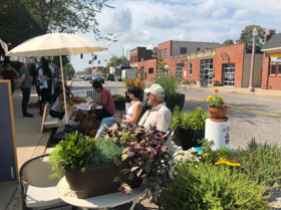
Climate Change Tip #17 – Emissions Reduction: Green energy. Enough said! If our energy source isn’t carbon based, we won’t have the carbon emissions. Here at The Conservation Foundation, we generate about 25% of our operations by wind and solar.
Climate Change Tip #18 – Education: The United Nations Convention on Biological Diversity estimates that the conservation of 30% of the land and water in the world by 2030 is necessary in order to achieve mitigation goals established under the Paris Climate Agreement. In a state where only 4% of our land and water is under conventional conservation, how do we go about contributing to this national effort and helping Illinois re-establish itself as a leader in conservation? Watch this webinar on the Illinois 30×30 plan and learn ways you can help promote this important goal in Illinois!
Climate Change Tip #19 – Water Security: As precipitation patterns change, water resources are expected to become less predictable and more scarce in many places, creating water security issues across the globe and locally. To protect the freshwater resources we do have (and, thankfully, are currently plentiful in our region), it is important to consider using biodegradable and less toxic products as often as possible. Product list? Laundry sheets. Paper envelope. Choosing products with less packaging. Water and land resources to produce and handle the waste. These environmentally-friendly products are also often safer for your family and community to be around.
Climate Change Tip #20 – Education: Buy furniture made with sustainably harvested wood. Deforestation is a serious problem, but buying sustainably sourced wood – look for the Forest Stewardship Council logo – ensures that your wood is coming from 380 million acres of FSC-certified forest and not an old-growth forest.
Climate Change Tip #21 – Carbon Capture: Protect our prairies! Not only are they absolutely stunning right now, but productive carbon sinks as well! Look at the millions of plants here, and each one is holding fixed carbon in their roots. When the plant dies off, some of the roots remain in the soil for hundreds of years as organic carbon humus.

Climate Change Tip #22 – Advocacy: Has your municipality signed on to the Climate Action Plan? This plan is designed to reduce carbon emissions, increase community resilience, and advance environmental justice. Contact your local city council representative and ask them to hold a discussion about this easy to follow plan for measurable steps in the right direction!
Climate Change Tip #23 – Education: It’s movie night! What should we watch? We recommend Before the Flood, Kiss the Ground, Chasing Coral and Chasing Ice for some climate education and inspiration.
Climate Change Tip #24 – Emissions Reduction: Lower your energy usage (and cost!) year round by considering shade and windbreaks when designing your landscape. This helpful guide by the DOE has some helpful tips to keep you cooler in the summer and warmer in the winter!
Climate Change Tip #25 – Adaptation: We can expect more extreme weather events into the future, and that means wetter wet periods and dryer dry spells. To reduce your flood risk, reduce the amount of impervious surface on your property, and advocate that your local government does the same! Find resources on gray vs. green infrastructure, permeable pavement, bioswales, and more!
Climate Change Tip #26 – Emissions Reduction: When ecosystems are clean and healthy, they perform best. Since plastic is derived from fossil fuels, they are also a big target in climate change mitigation efforts. Extracting, producing, and transporting them emit a lot of greenhouse gasses. Plus, they never fully decompose, but breakdown into smaller particles called microplastics that end up in our soil, water, and, eventually, our bodies. Doing our part to reduce the amount of plastic we use will help keep these microplastics out of our land, rivers and streams!
Climate Change Tip #27 – Nature-Based Solutions: Healthy ecosystems are key to climate change mitigation and adaptation. Our living environment has the opportunity to capture and store carbon, absorb flooding, and cool our neighborhoods. The healthier these systems are, the greater potential they have to perform these functions for us.
Climate Change Tip #28 – Water Security: Pick up trash, keep it out of our forests and waterways – when our ecosystems, plants, and wildlife already have so many challenges ahead of them due to climate change, let’s play an important role in reducing one of the additional stressors on them by cleaning up and reducing litter. Healthy ecosystems are more resilient. More resilient ecosystems mean more ecosystem services (flood protection, air quality, clean water) available to our communities that face climate change impacts right here in the Chicago region and northern Illinois. Participate in our St. Charles Fox River Cleanup and Yorkville Fox River Cleanup this September!
Climate Change Tip #29 – Advocacy: Many of our parks and preserves were acquired after the local park district or forest preserve passed a referendum to secure the funding necessary. It’s so important when these ballot measures are proposed that we help spread the word! Funding open space is necessary for carbon sequestration, water quality, habitat – the whole conservation kit and caboodle! One of these referendums is taking place in Cook County this November. Share with your friends in Chicago and ask them to vote YES for Clean Air, Clean Water, and Wildlife in Cook County!
Climate Change Tip #30 – Food Security: Make your food last longer! If you’ve bought too much, try pickling or canning. You’ll save money, and you’ll save the energy and resources necessary to grow more food to eat in the future. You’ll also keep more food out of the waste stream. What are your favorite canning and pickling techniques? Here’s one of ours!
Climate Change Tip #31 – Emissions Reduction: Remove some of your lawn to save energy on gas powered equipment, fertilizers, and pollution. Need help getting started? Contact The Conservation Foundation at [email protected].
Climate Change Tip #32 – Water Security: Resilient ecosystems are better able to respond to changes in the climate. Since plastic is derived from fossil fuels, they are a big target in climate change mitigation efforts. Extracting, producing, and transporting them emit a lot of greenhouse gasses. Plus, they never fully decompose, but breakdown into smaller particles called microplastics that end up in our soil, water, and eventually our bodies.
Climate Change Tip #33 – Food Security: “Because fossil fuel-based fertilizers and most synthetic pesticides are prohibited in organic farming, it has a significantly lower carbon footprint. The production of these farm chemicals are energy intensive.” And of course, if you’re looking for local, organic produce, we have you covered! Just a reminder, Green Earth Harvest farmshares go on sale December 1st.
Climate Change Tip #34 – Water Security: There are better options out there for parking lots than the huge swaths of blacktop we see today. When water runs off non-permeable surfaces, it picks up pollutants such as tar, salt, construction chemicals or waste, car oil, and antifreeze, carrying them to storm drains and into rivers and streams. Additionally, when water flows in rushes to rivers and streams, it does not percolate through layers of soil and porous rock to recharge the water table. At our headquarters in Naperville, we installed permeable, green lot, permeable concrete walkways, and permeable pavers.
Climate Change Tip #35 – Education: The past couple years have shown us how important respiratory health is, and how vulnerable populations can be severely impacted by environmental (and viral) hazards. Preserving and promoting healthy ecosystems that can clean our air and sequester greenhouse gas emissions will only become more important!
Climate Change Tip #36 – Water Security: “Plant native! (Do we sound like a broke record yet?) Planting native plants and shrubs has a huge impact in adapting our neighborhoods for increased rain events. These deep, deep roots allow rain water to percolate through layers of soil and porous rock to recharge the water table. One acre of established prairie can ABSORB 9 inches of rainfall per hour before runoff occurs (University of North Iowa) and will INTERCEPT as much as 53 tons of water during a one-inch hour rain event (University of Nebraska-Lincoln)!
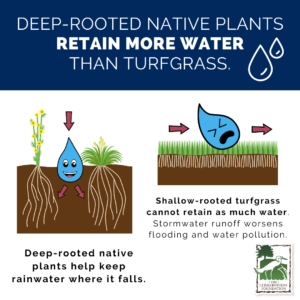
Climate Change Tip #37 – Advocacy: Have you heard of Transit Oriented Design? It may seem like something removed from our mission to save land and save rivers. But, according the the Federal Highway Administration’s stats, U.S. cities have to devote about 1,240 square feet of road per person! That’s just road miles, not the public and private parking places, driveway lanes, etc. If we design cities to have transit, walking, and biking as options for people, we not only mitigate greenhouse gas emissions, we save a lot of land!
Climate Change Tip #38 – Adaptation: Evolving technology is making it possible to turn sewage wastewater into energy. A new facility is under construction in Rockford and will be one of the largest Biomethane plants in the U.S. once complete!
Climate Change Tip #39 – Education: Go for a walk in a park or forest preserve. Invite a friend to join you. Pause and admire the beauty. Listen for critters or birds. How does this fight climate change? We don’t fight or work to preserve what we don’t know and appreciate. So, go hug a tree then find ways to preserve it’s home!
Climate Change Tip #40 – Nature-Based Solutions: Let’s talk about filters, and making sure they are at peak performance. You should make sure to change your HVAC filters regularly – dirty air filters will make your system work harder and waste energy. And you should make sure your community is full of trees. Trees are the air filters for the world, filtering urban pollutants and fine particulates making the air cleaner to breath. At The Conservation Foundation, we prioritize the preservation of land around rivers and streams, because healthy clean land will filtrate water before it gets to our water ways. Protect those filters, wherever you find them!
Climate Change Tip #41 – Food Security: Yes, it is quite cold outside! Let’s daydream about our garden next year together. Planting your own veggies and shrinking the distance your food has to travel is a great way to shrink your carbon footprint. It’s a great time to start planning!
Climate Change Tip #42 – Nature-Based Solutions: Does your town have a beautification committee or a public garden plot you can help take care of? Working with the soil is a great way to meet neighbors and give back to your community!
Climate Change Tip #43 – Carbon Capture: Plant a tree! Trees are carbon sinks. They soak up carbon dioxide from the atmosphere and reduce the amount in our atmosphere.
Climate Change Tip #44 – Carbon Capture: Plant another tree! Especially in urban areas. Trees help cool down our cities and mitigate the heat island effect. Check to see if your community offers a parkway tree program. Many cities offer financial assitance and will even plant them for you!
Climate Change Tip #45 – Food Security: Shopping local isn’t just limited to the food we eat. When we buy from local makers, we are recieivng goods made close to home (less transportation emissions), and the proceeds of that sale stay in your community too!
Climate Change Tip #46 – Education: Holiday reminder – think about how much you’re consuming. Higher consumption is directly linked to higher emissions, so consider using/consuming less. Opt for gift experiences, or choose products with less packaging.
Climate Change Tip #47 – Education: Salt Smart: Increased salinity reduces habitat, and has created a Dead Zone in the Gulf of Mexico. The Dead Zone is pulling less carbon out of the air. But, using less salt preserves our aquatic ecosystems can reduce the impact of salt on the environment.
Climate Change Tip #48 – Education: Did you read any of our recommended climate change books? Share them with a friend, or place them in your nearest “Little Free Libraries” to spread the word!
Climate Change Tip #49 – Water Security: As our climate changes, we will need to be more and more mindful of every drop of water used. Make sure you look for WaterSense labeled products in your home, yard, and business. The EPA has a great reference list of products, tools, and information about water usage!
Climate Change Tip #50 – Nature-Based Solutions: Donate to The Conservation Foundation! We work to protect land, habitat, and clean watersheds that support healthy, thriving ecosystems and provide invaluable ecosystem services every day. By helping these ecosystems thrive, The Conservation Foundation allows wildlife, communities, and our region’s natural resources to be more resilient and adaptable through the challenging climate change crisis, in addition to continuing to capturing carbon.

